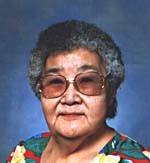Article
Harold Cardinal
Harold Cardinal, Cree chief, lawyer, author (born on 27 January 1945 in High Prairie, AB; died on 3 June 2005 in Edmonton, AB). An Indigenous rights activist, Cardinal was a leader in the movement against the 1969 White Paper, which sought to do away with Indian Status and treaty rights. Cardinal was actively involved in Indigenous politics for much of his life and is remembered as a strong and inspirational leader.














